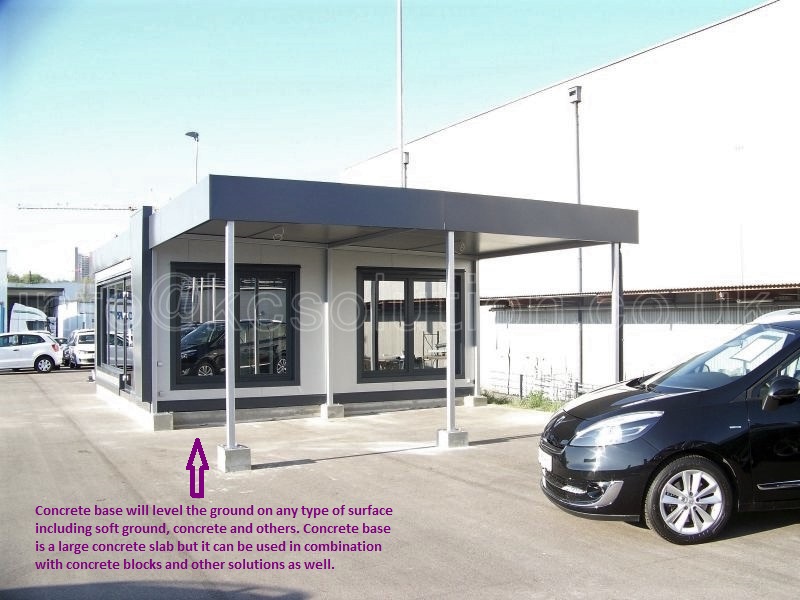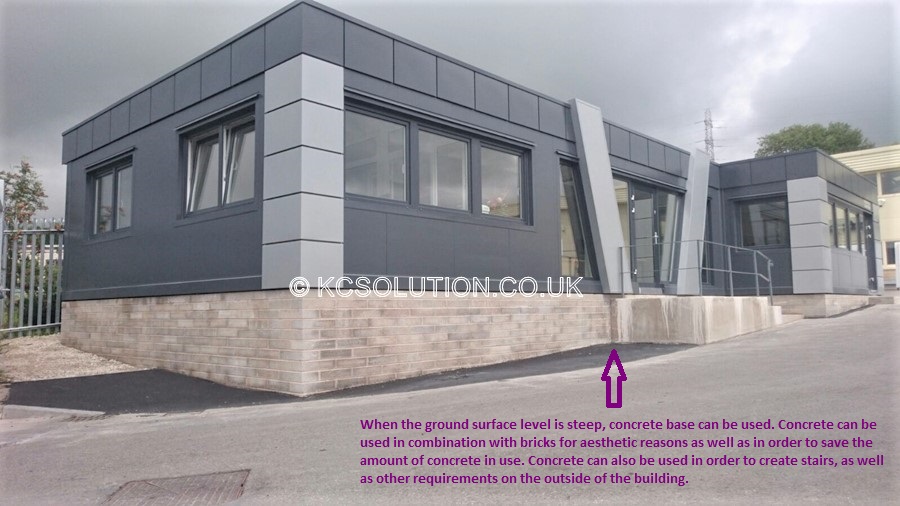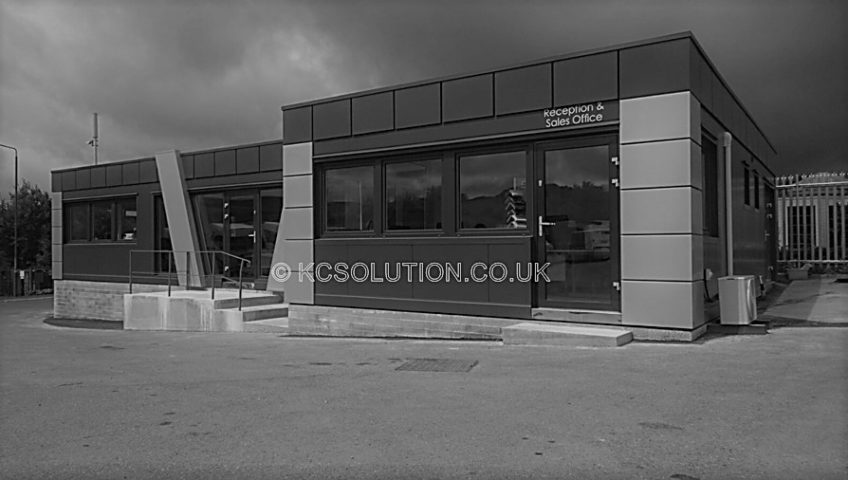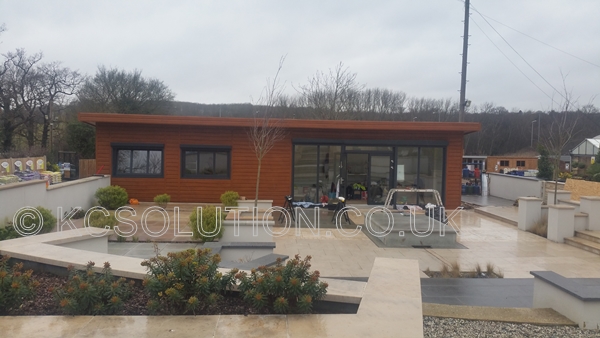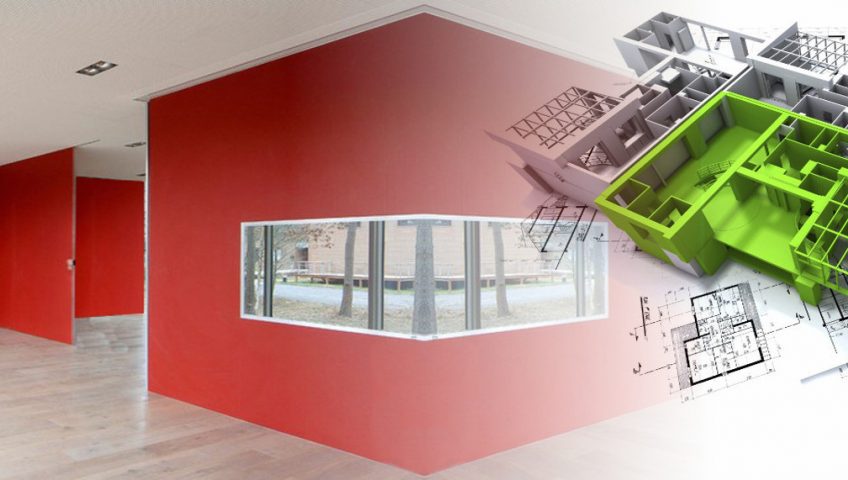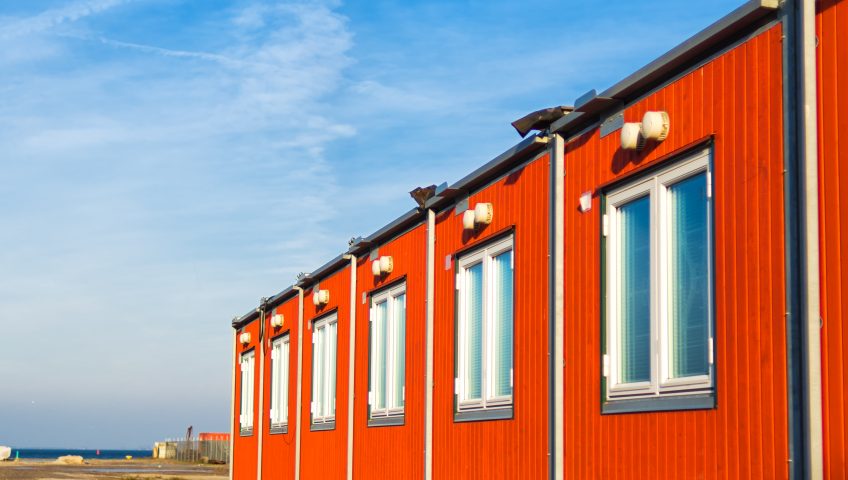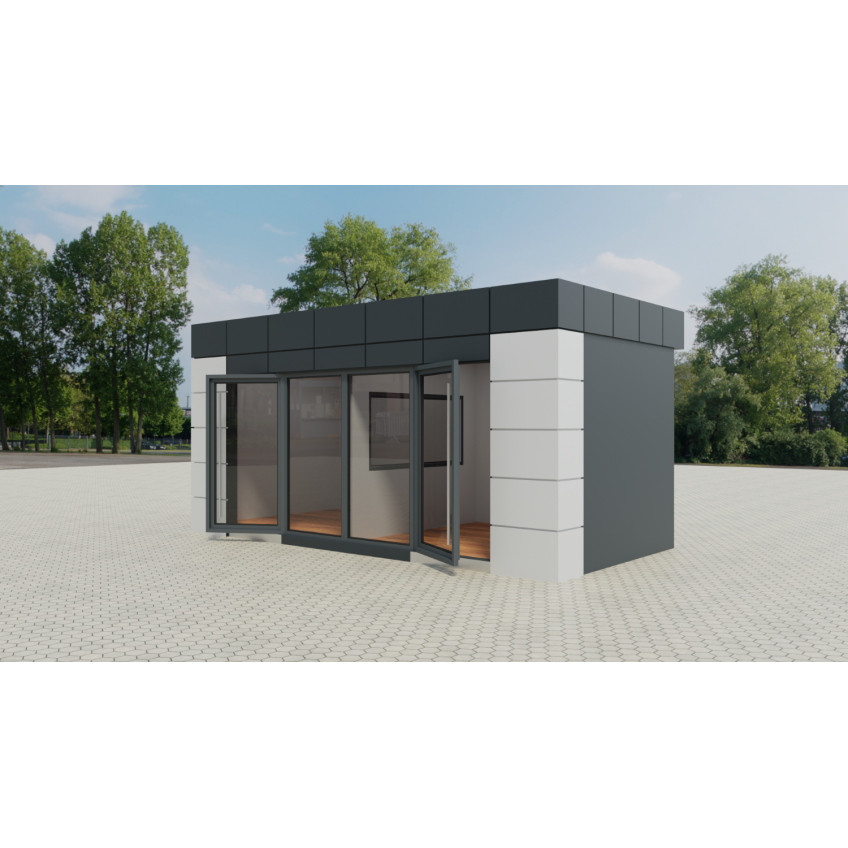
About Visiting Pods
Visiting Pods or meeting pods have recently become very popular. Particularly useful within care home environment these Covid secure facilities are making the difference during a difficult time. These cabins where families can meet safely allow loved ones to reunite and are proving to be additionally useful during the winter months.
Care Home Pods Making the Difference
The pandemic has been difficult for many business owners and employees in all sectors; cafes, music venues, stores, factories and many more. Pandemic has also been particularly tough on families. The loved ones not being able to see each other are missing their families. Those living in care home environment or those who have loved ones living there can feel it.
Having a designated space for loved ones to meet each other has proved to be difficult to manage for care home owners. Trying to reunite outdoors is an equally difficult task. With weather conditions worsening and the danger of spreading the virus, it is a struggle. The idea of care home pods has been born to answer this problem. Allowing loved ones to see one another in a safe environment has already proven successful in many care homes. There are three main goals to strive towards via use of the visiting pods.
Reaching Goals
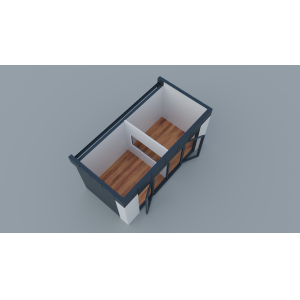
While designing, three main goals come to mind, in order to resolve previously discussed problems. These goals are:
- To reunite families in a safe environment
- To help reduce the spread of the virus
- To reduce impact of weather conditions on the meeting families
The construction of each visiting pod is designed to reach the above goals. Meeting pods construction enables families to meet safely and to bring back smiles on their faces.
Pod’s Construction Methods
The meeting pod construction was though through to tackle the main problems. This led to the use of the following construction solutions:
- Family members enter through the two separate doorways; this helps to reduce the spread of the virus
- A wall construction dividing the two sections of the room (or two rooms) incorporates glass which enables people to see each other and speak with each other via intercom; this enables people to interact freely while still reducing the spread of the virus
- The rooms are easy to clean and sanitize thanks to the materials used; glass, steel. Reducing the spread of the virus once more.
- The problem of weather conditions is tackled via structure of the pod itself. It is an insulated building structure and bespoke design. The heating systems and any other requests such as air conditioning is discussed with the client.
Visitor’s Pods Bespoke Design Options
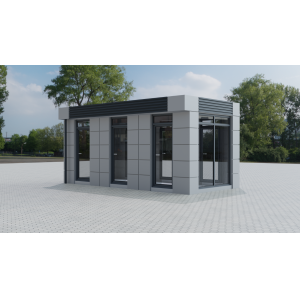
Bespoke design of visitor’s pods means that the size of these buildings as well as a number of windows and the whole visual look can be arranged as requested by the client. The glass dividing the rooms can also be discussed and designed to fit client’s needs. There can be a small opening at the top, instead of an intercom, which could be preferred by some families, meaning they would hear each other more naturally.
After acquiring the building, the client can add any interior details such as peaceful colours of the furniture or wall décor in order to make the room more welcoming to families.
Even with the vaccine here we still cannot predict how long it will take before we can fully come back to normality. No matter how short or long it will take, a long-term reason for this type of building being useful is the diversity of the design as well as a possibility of quick changes to repurpose. In the future this type of building can be adapted or kept as a meeting space, with the dividing wall staying in its place or being taken out. It could have many purposes. One of many being a conservatory, a reading space or even a café and relaxation area.
In order to get more inspiration for repurposing a building like this in the future, have a look at our realizations map.
In order to find out more about visitors’ pods designed by us or ask for a quote and advise please contact us.

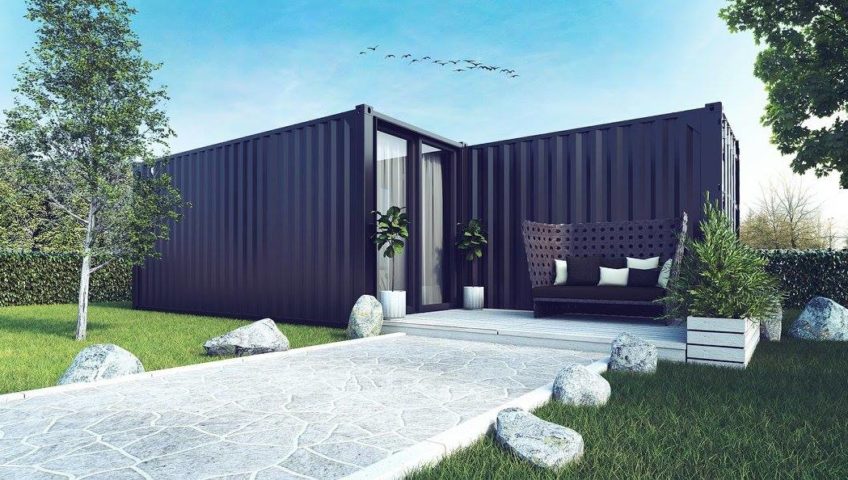
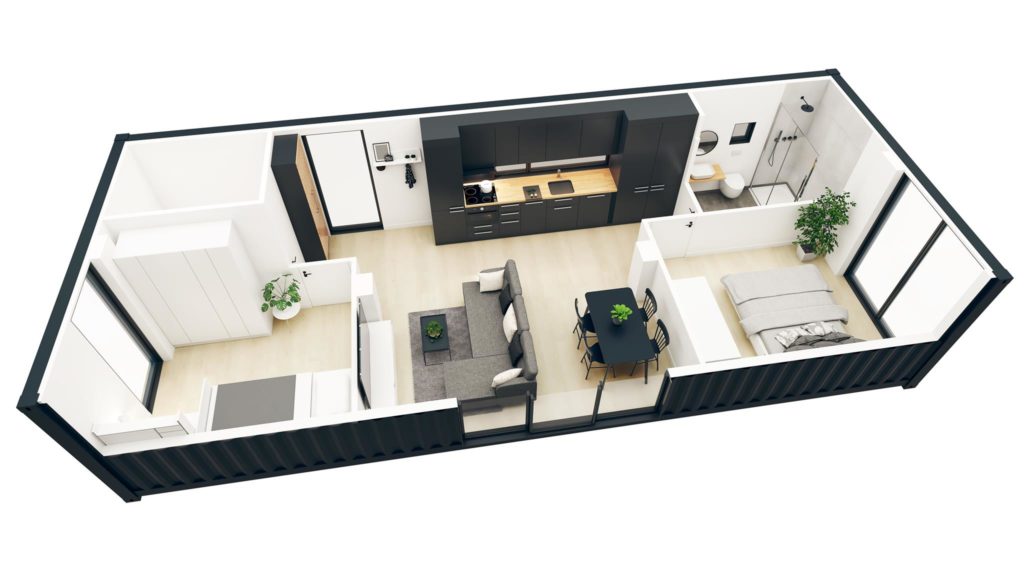
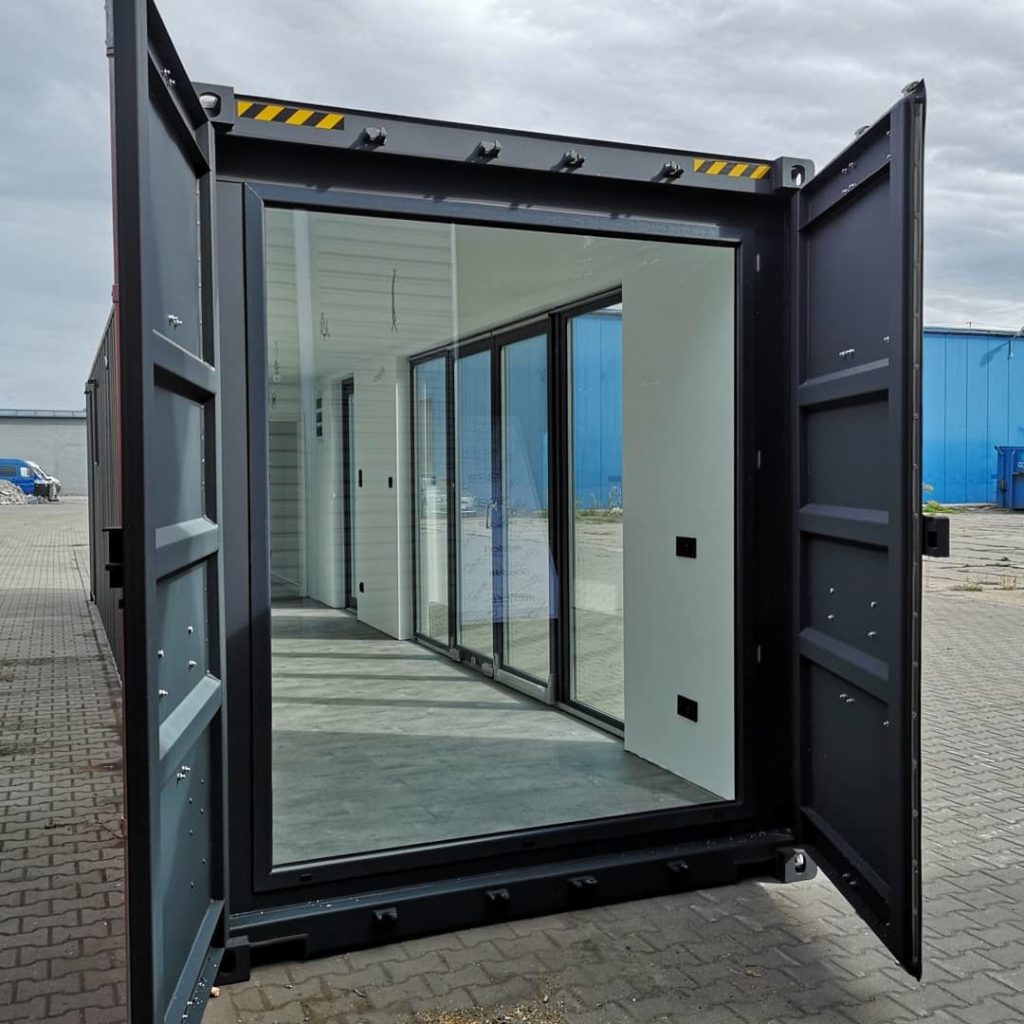
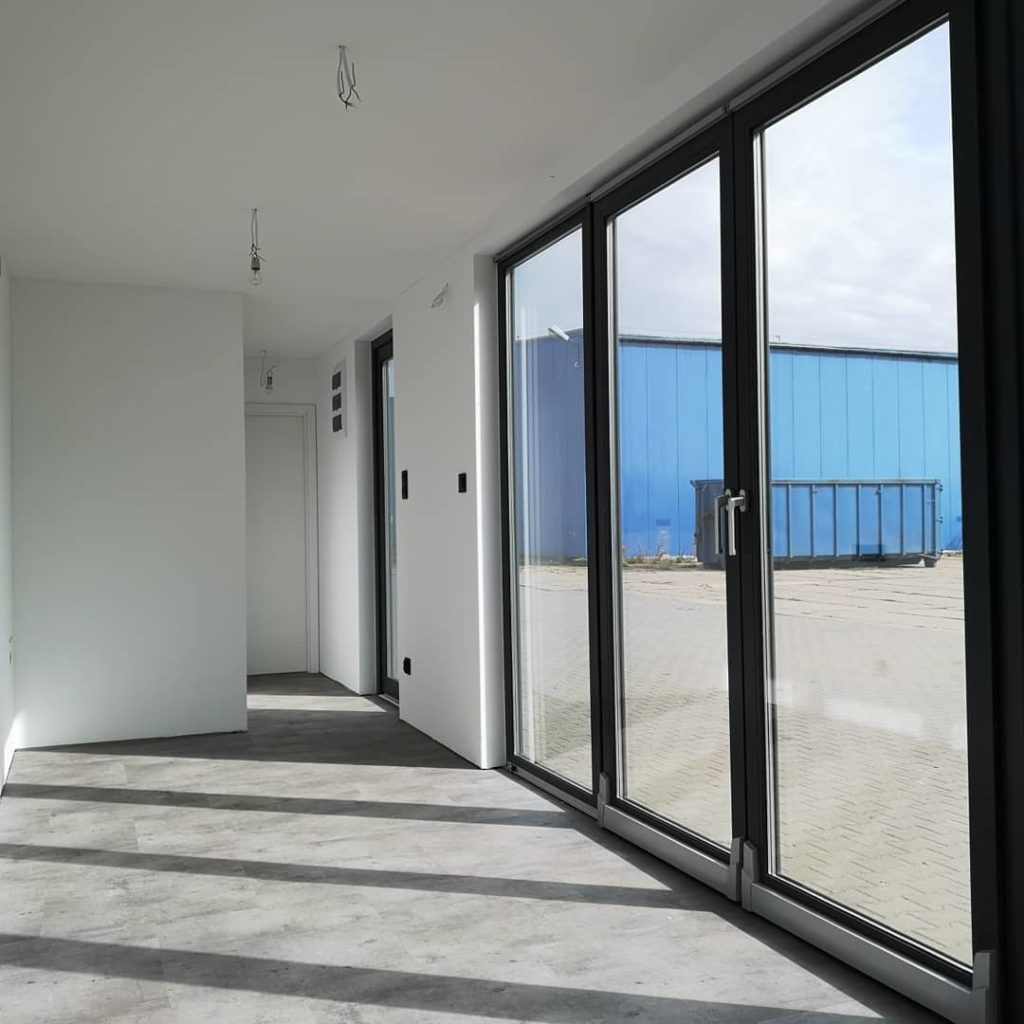
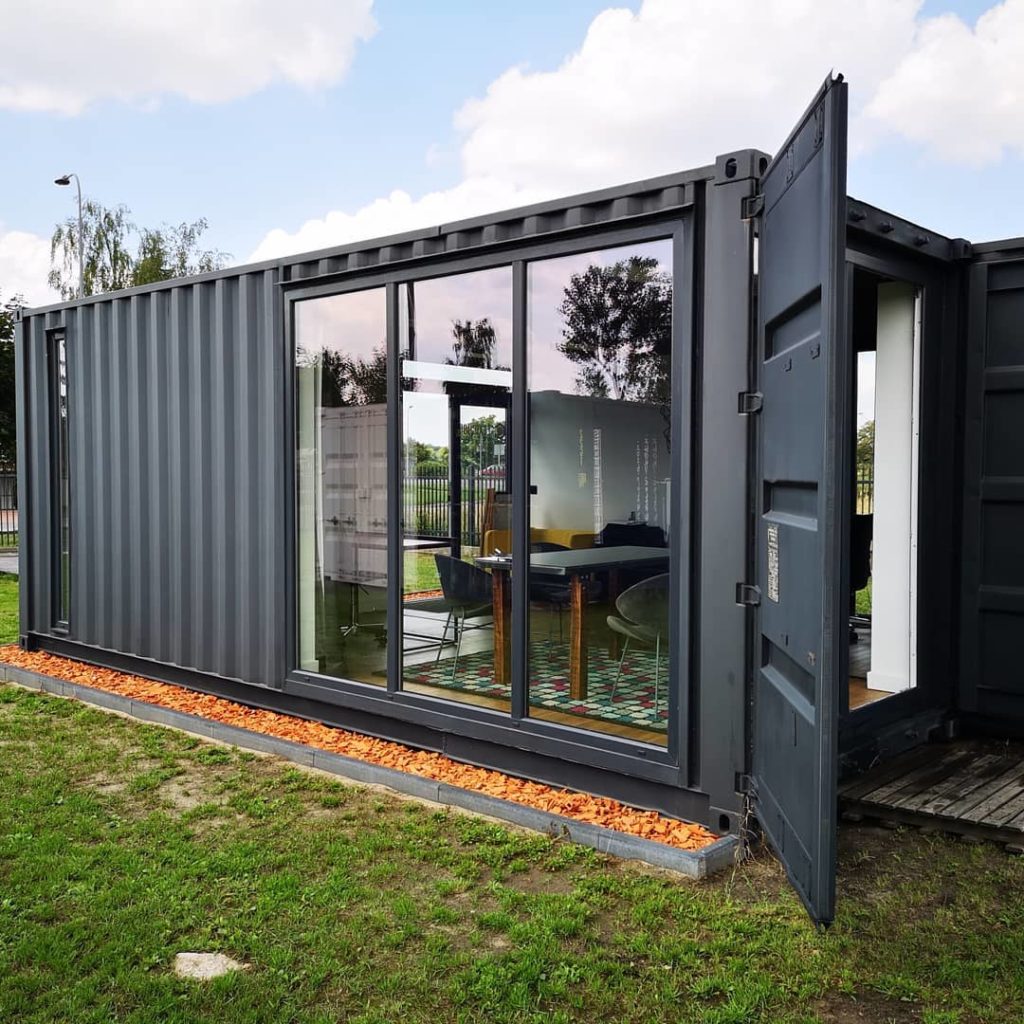

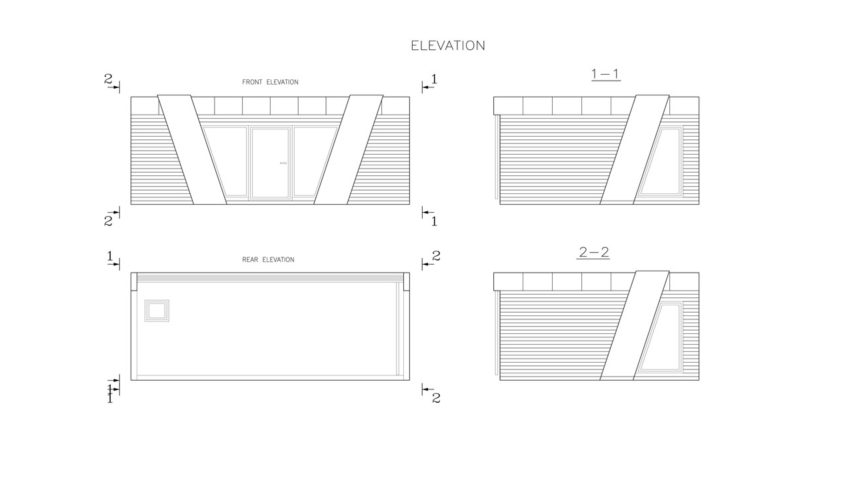
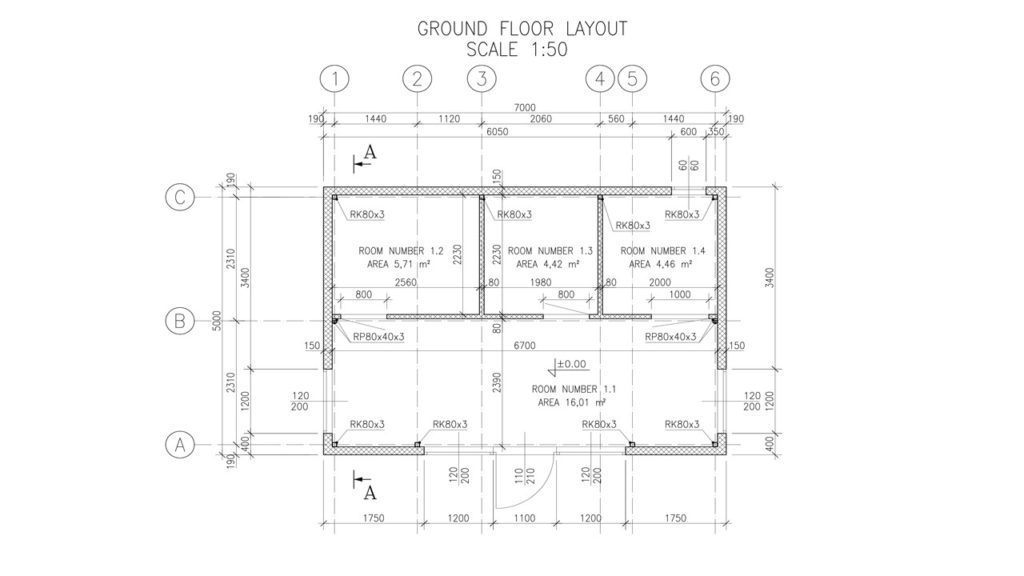
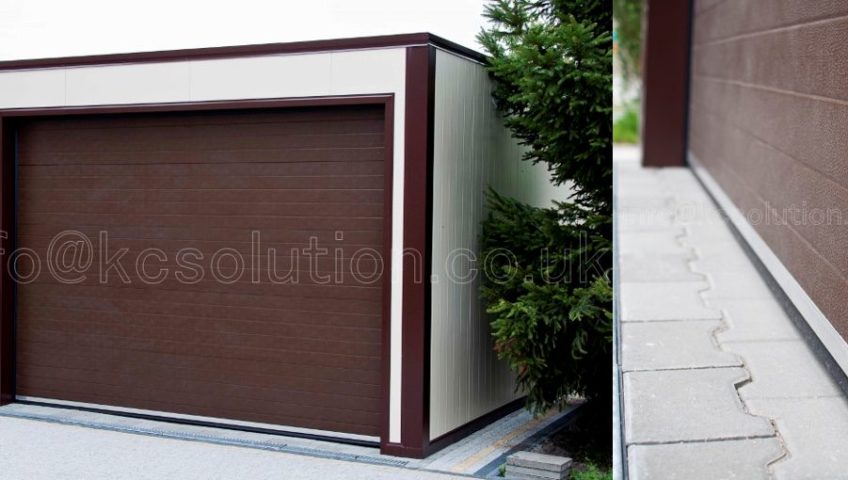
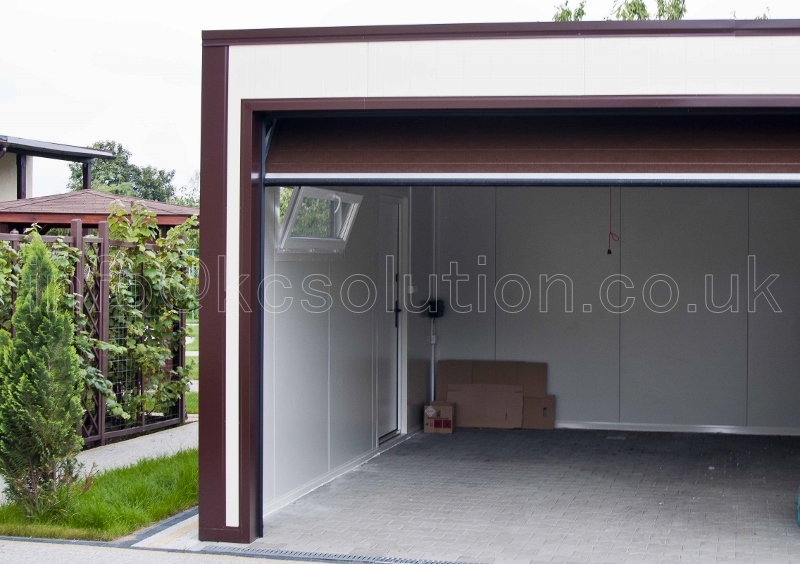
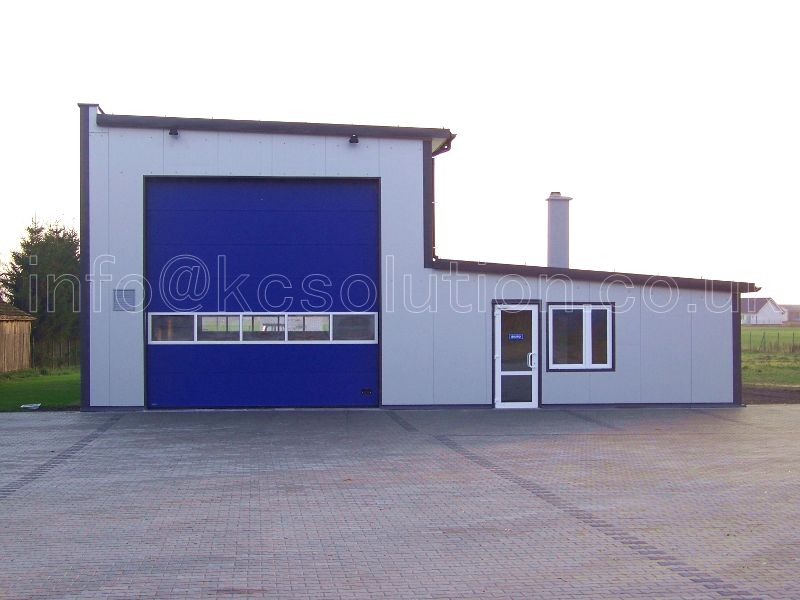
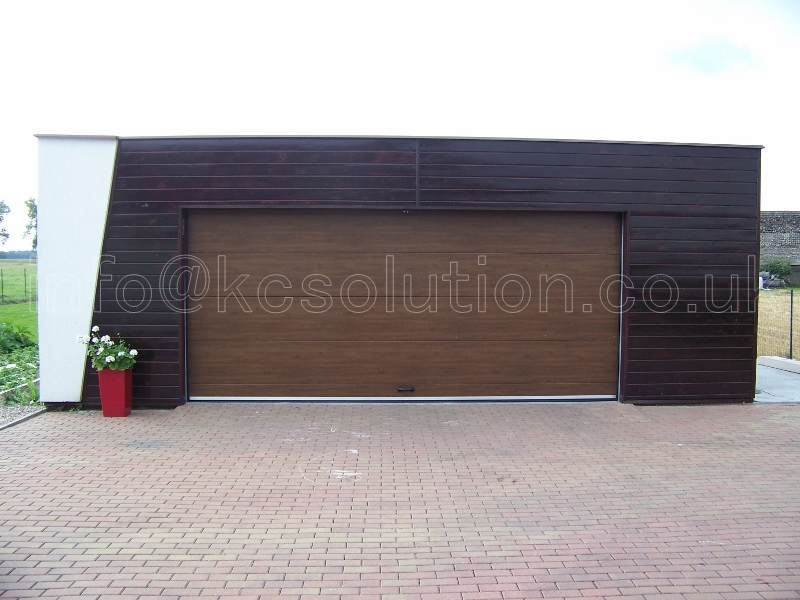
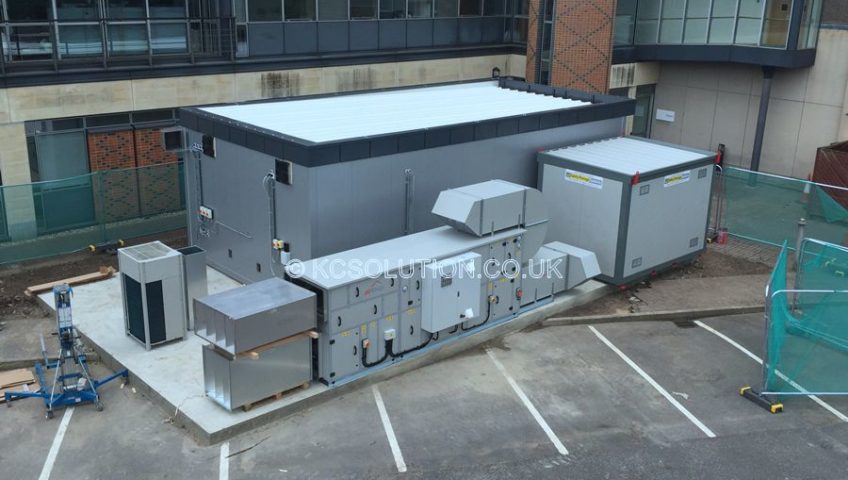
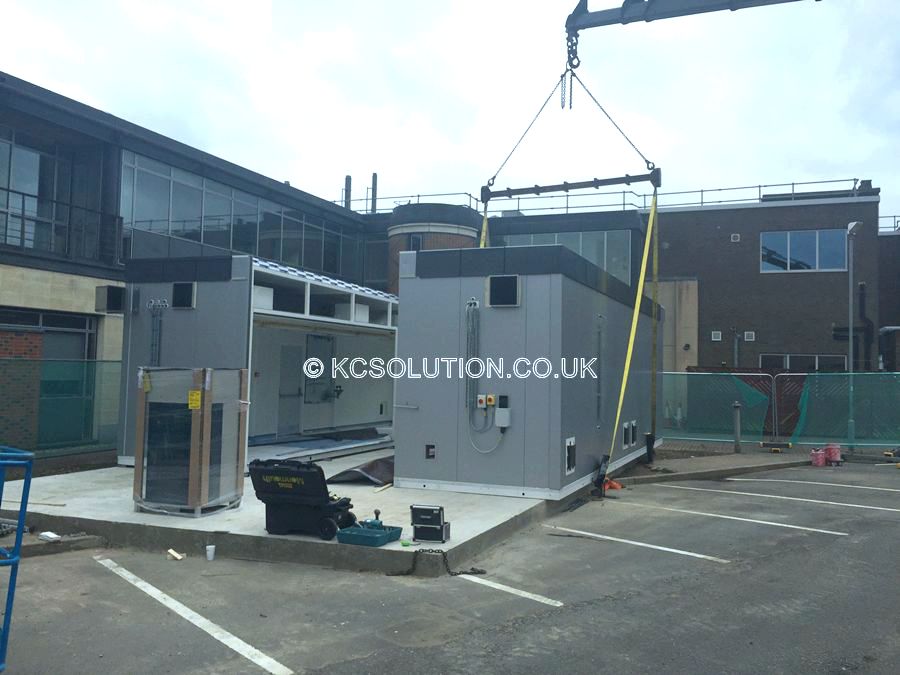

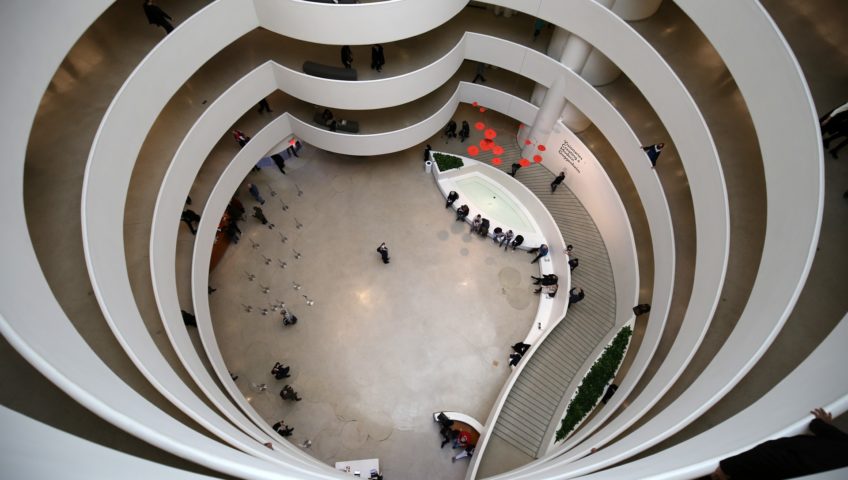
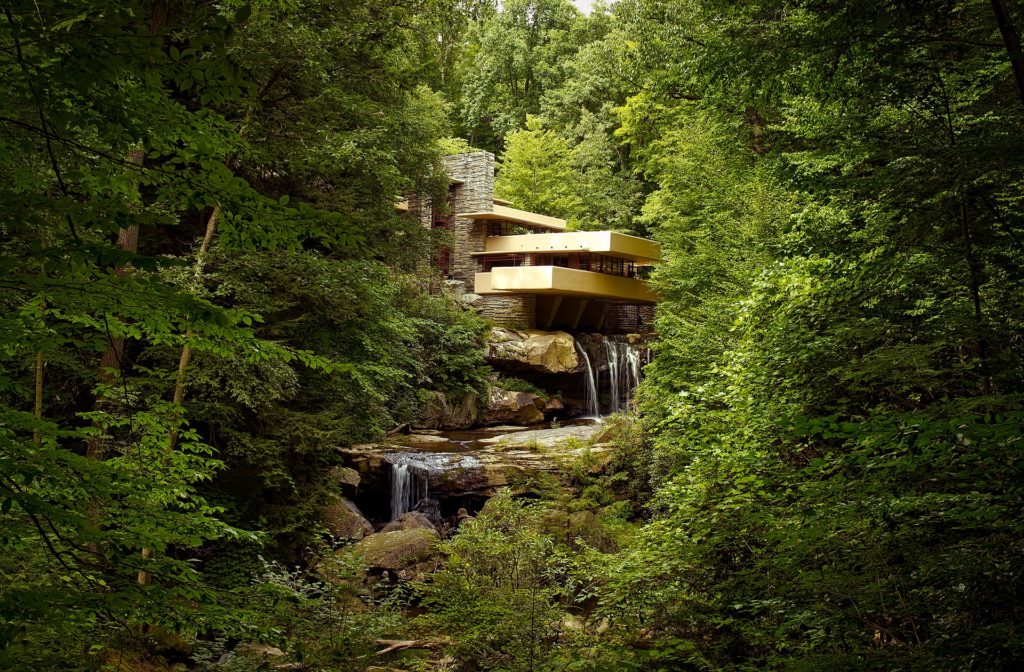
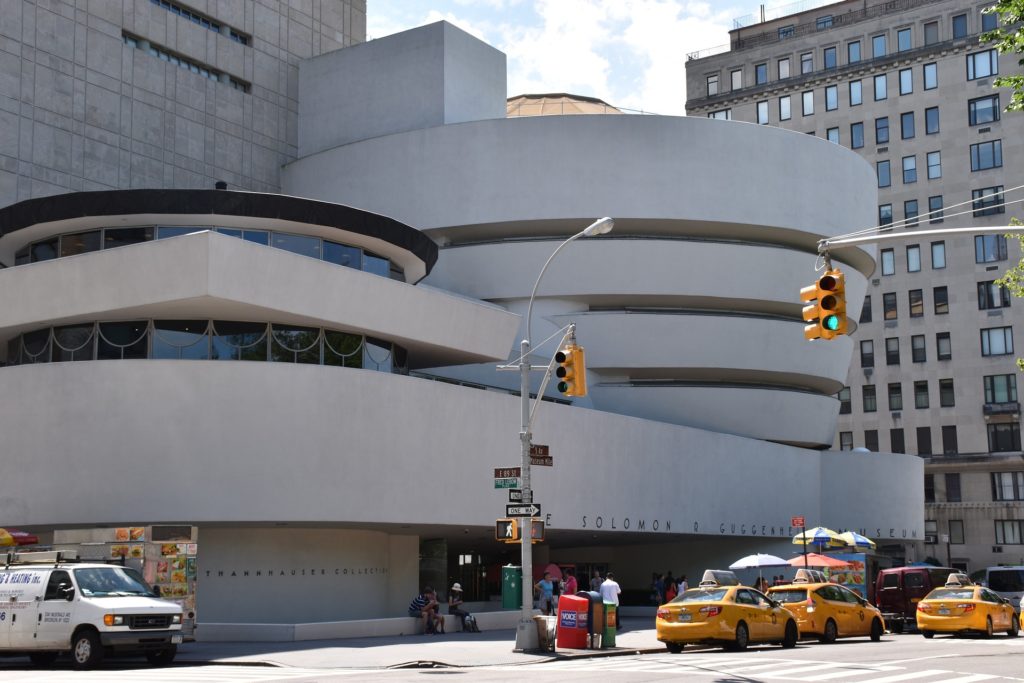
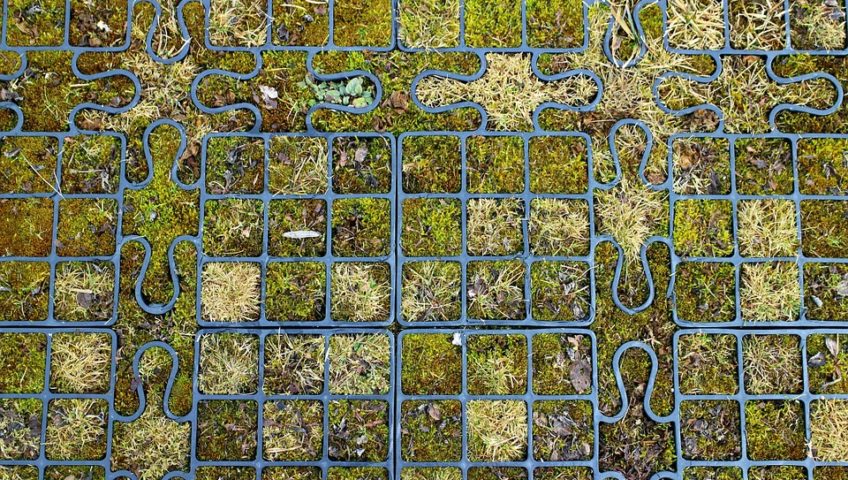
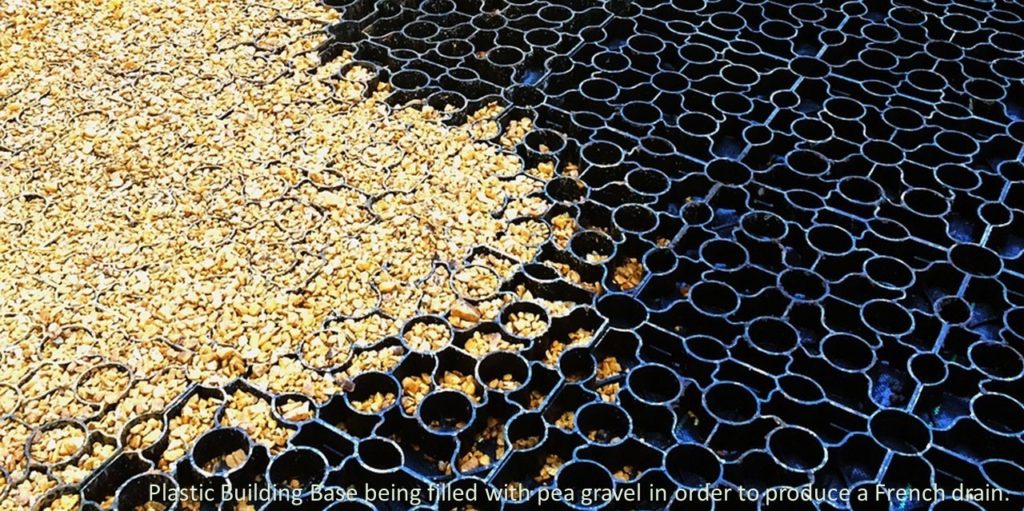
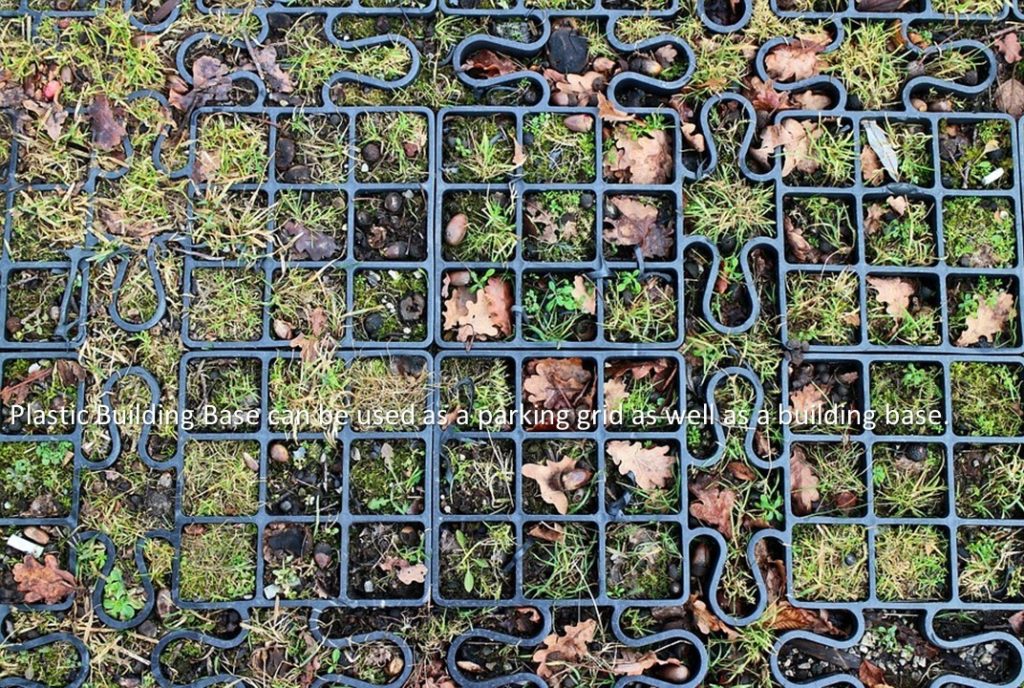
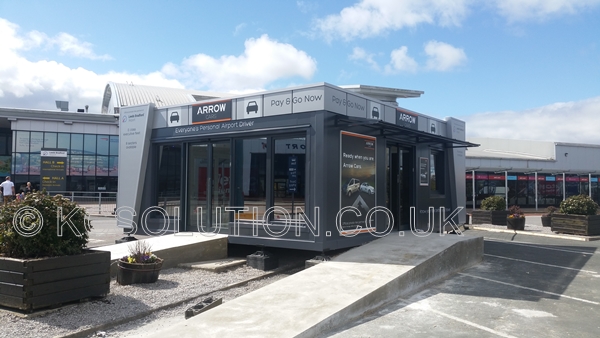
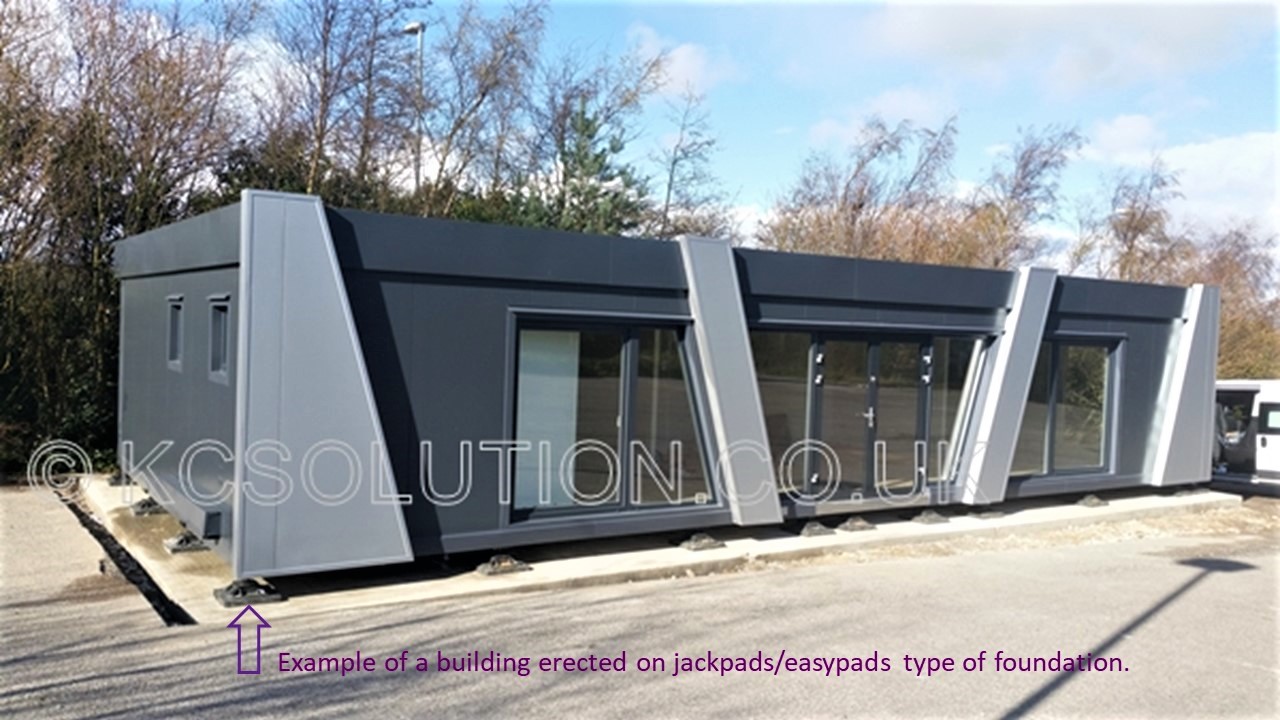 Our focus goes to jackpads/easypads for the current article. Let us start by clarifying that jackpads and easypads are almost identical products made by different brands. In our opinion, both are ok to use. We do not tend to advise on brands but rather on product types. Jackpads/easypads are ready to use when bought off the shelf, similar to concrete blocks in this sense.
Our focus goes to jackpads/easypads for the current article. Let us start by clarifying that jackpads and easypads are almost identical products made by different brands. In our opinion, both are ok to use. We do not tend to advise on brands but rather on product types. Jackpads/easypads are ready to use when bought off the shelf, similar to concrete blocks in this sense. 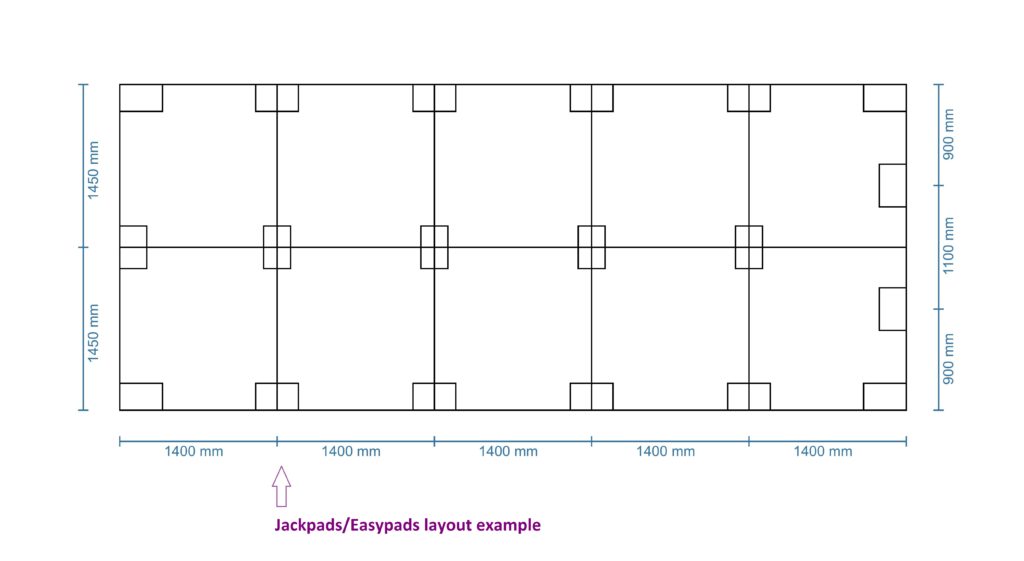 Jackpads/easypads layout is prepared by an architect and a client is provided with the layout drawings in order to prepare the surface prior to modular building arrival.
Jackpads/easypads layout is prepared by an architect and a client is provided with the layout drawings in order to prepare the surface prior to modular building arrival.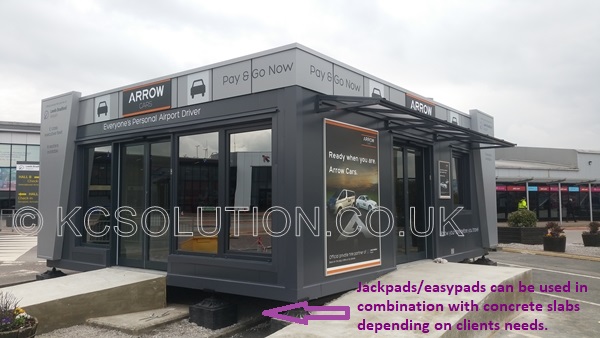 An additional advantage of jackpads/easypads use is the possibility of combining them together with a concrete slab. It is particularly useful if there is a need for access ramp construction and/or the outside staircase. Jackpads/easypads are therefore one of the most flexible and convenient ways of preparing the surface under a modular building.
An additional advantage of jackpads/easypads use is the possibility of combining them together with a concrete slab. It is particularly useful if there is a need for access ramp construction and/or the outside staircase. Jackpads/easypads are therefore one of the most flexible and convenient ways of preparing the surface under a modular building. 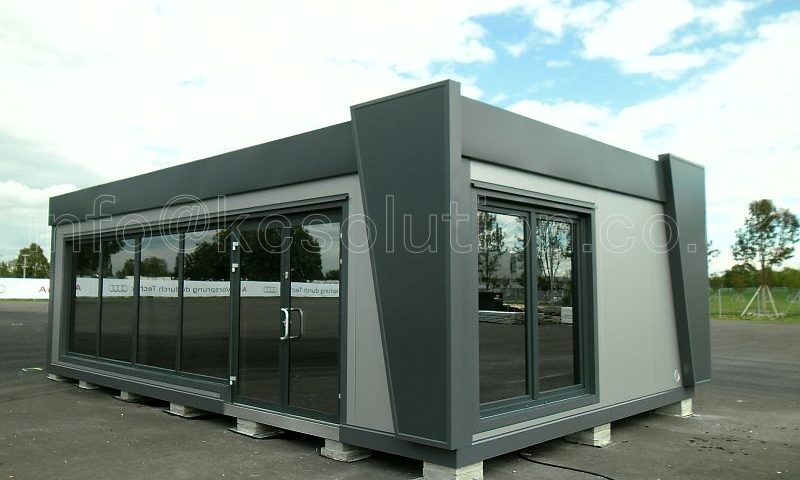
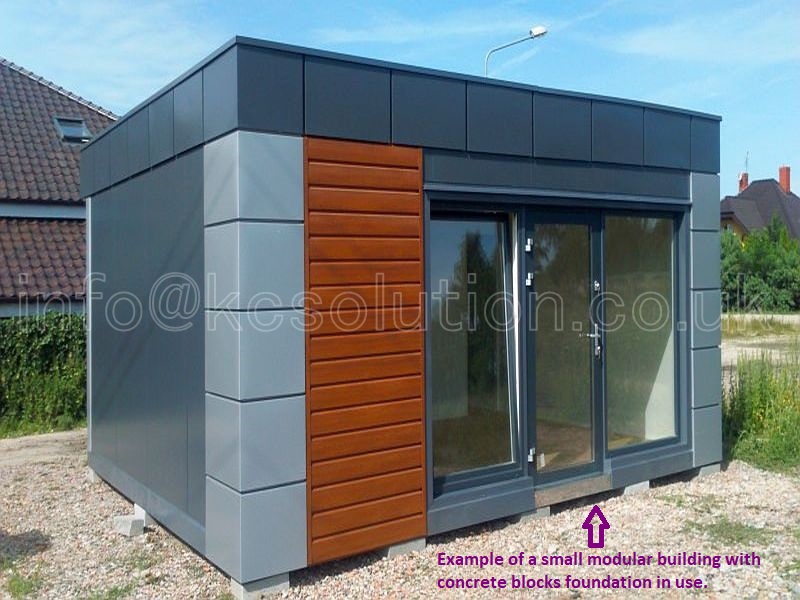
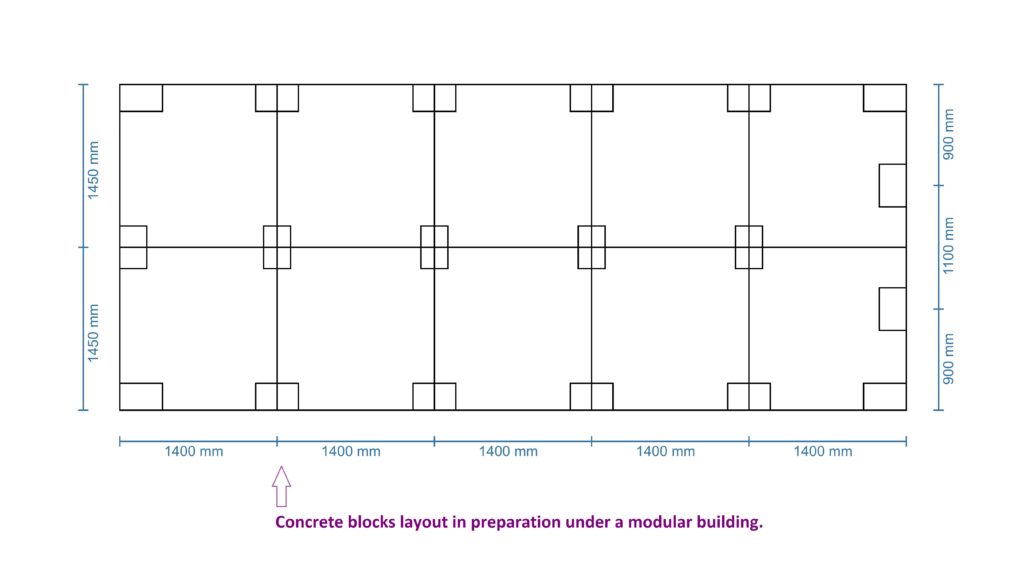

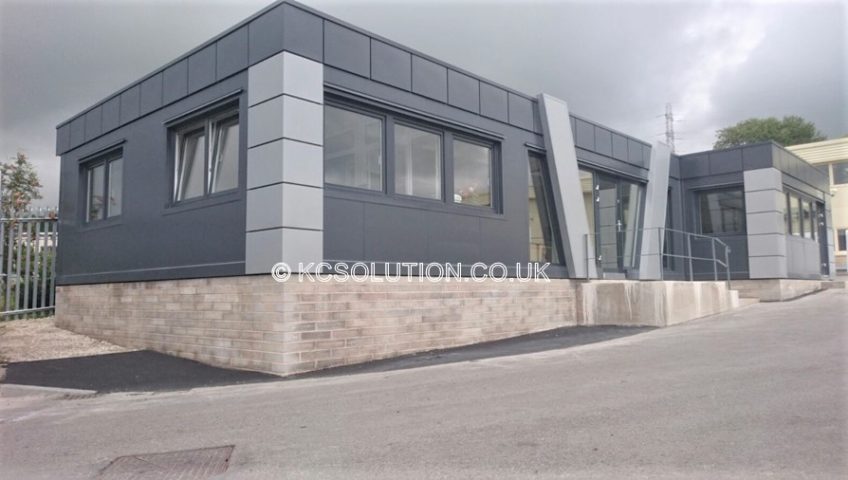
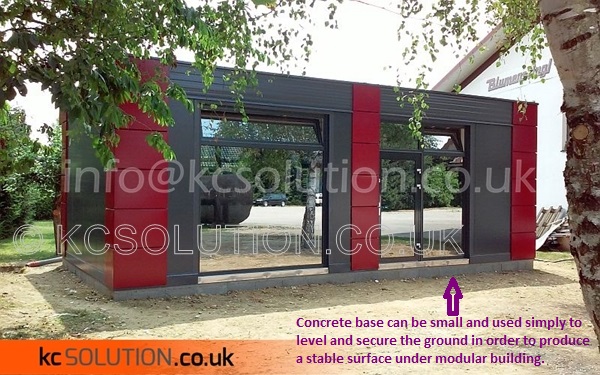 We need to remember that weight of an empty building is spread out evenly at first, but as soon as we put furniture in, some areas within the building interior will be holding more weight and naturally putting more stress onto the foundation. This is completely natural but if for any reason, the foundation is not leveled properly, we may start noticing problems such as difficulties with shutting windows and doors. Particularly if the construction is to be undertaken on a soft ground, large slab of concrete base will prevent building foundation settlement on any of the sides resulting in preventing mentioned problems. If prepared in the right manner, the conrete base is a very stable and safe ground. When the ground base is looked at, discussed with our architect and prepared in the right manner, all potential problems with building settlement will be avoided.
We need to remember that weight of an empty building is spread out evenly at first, but as soon as we put furniture in, some areas within the building interior will be holding more weight and naturally putting more stress onto the foundation. This is completely natural but if for any reason, the foundation is not leveled properly, we may start noticing problems such as difficulties with shutting windows and doors. Particularly if the construction is to be undertaken on a soft ground, large slab of concrete base will prevent building foundation settlement on any of the sides resulting in preventing mentioned problems. If prepared in the right manner, the conrete base is a very stable and safe ground. When the ground base is looked at, discussed with our architect and prepared in the right manner, all potential problems with building settlement will be avoided.